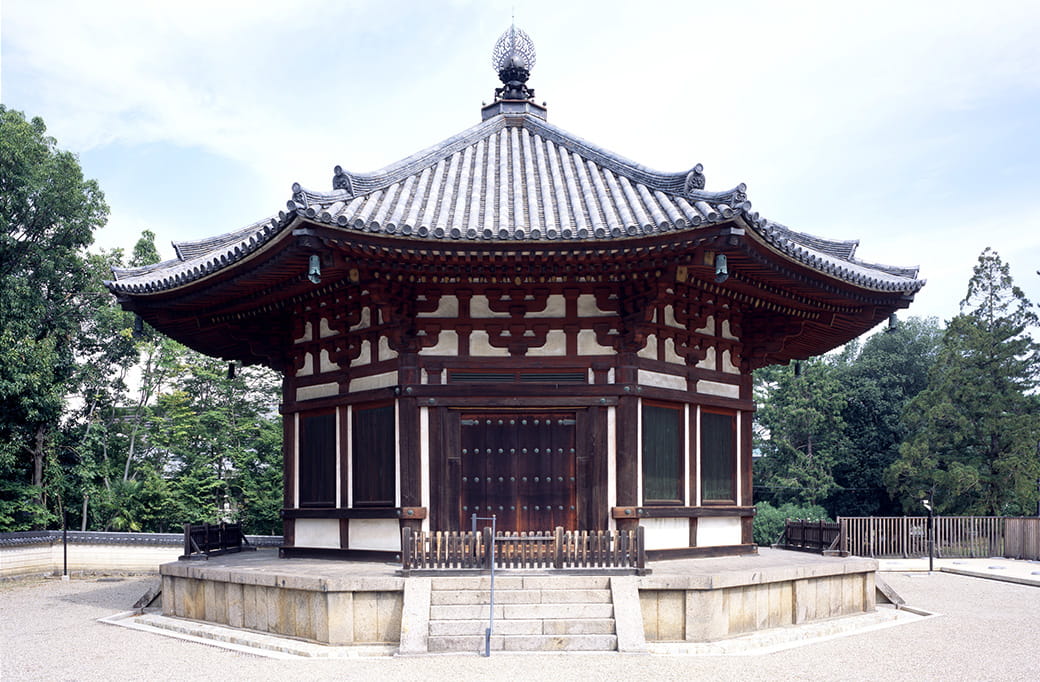Northern Round Hall National Treasure

This building, whose round shape denotes its status as a memorial chapel, was originally erected in 721 to mark the one-year anniversary of the death of Kohfukuji’s founding patron, Fujiwara no Fuhito (659–720). The original Northern Round Hall burnt down in 1049, and though replaced, was destroyed again in 1181 by troops under Taira clan commander Taira no Shigehira (1158–1185) during a battle known as the Burning of the Southern Capital (Southern Capital being another name for the city of Nara). The current building was completed in 1210. Having survived major fires in 1327 and 1717 that destroyed most of the temple complex, the hall is the oldest structure at Kohfukuji today, and houses a number of important icons.
The statues in the Northern Round Hall center on the principal icon, an image of the of the future Buddha Miroku (Skt. Maitreya). This image is flanked by a pair of sculptures of the monks Mujaku (Asanga) and Seshin (Vasubandhu). All three of these images were completed in the year 1212, and are attributed to the most famous Buddhist sculptor in Japanese history, Unkei. Also installed on the altar are gilded wooden statues of the Bodhisattvas Hōonrin and Daimyōsō that date to the Muromachi Period (1336–1573), as well images of the Four Heavenly Kings of Buddhist mythology: Zōchōten, Tamonten, Jikokuten, and Kōmokuten. Completed in 791 and made using the wood-core dry-lacquer technique, these sculptures are famous for their exaggerated facial expressions, which border on the humorous in the case of Jikokuten, whose bulging eyes appear about to pop out of his head. The images of the Four Heavenly Kings, along with the images of Miroku, Mujaku, and Seshin, are designated National Treasures.

